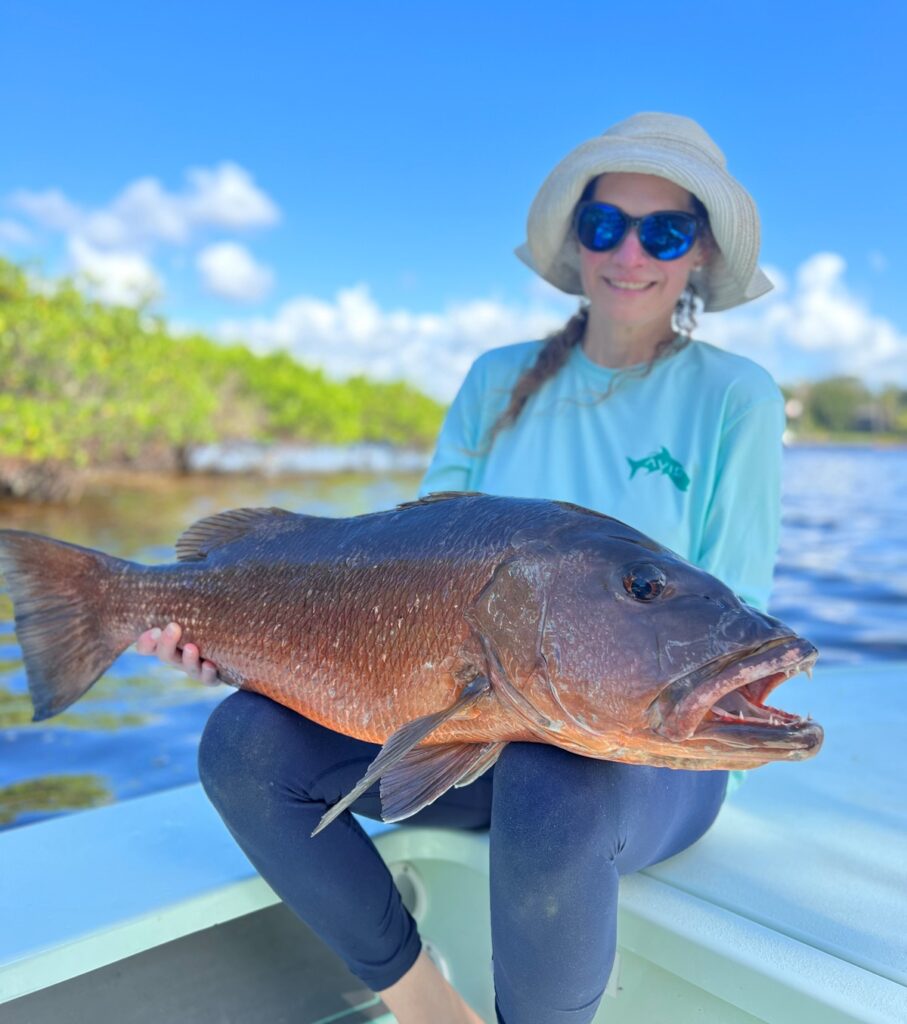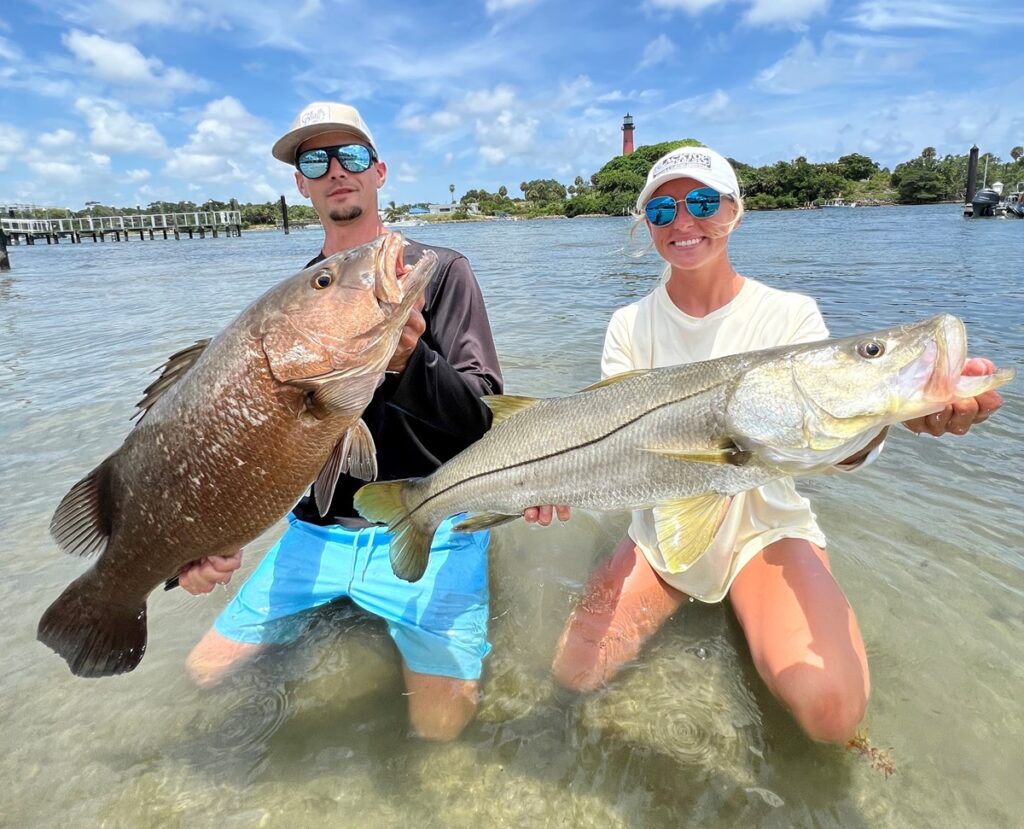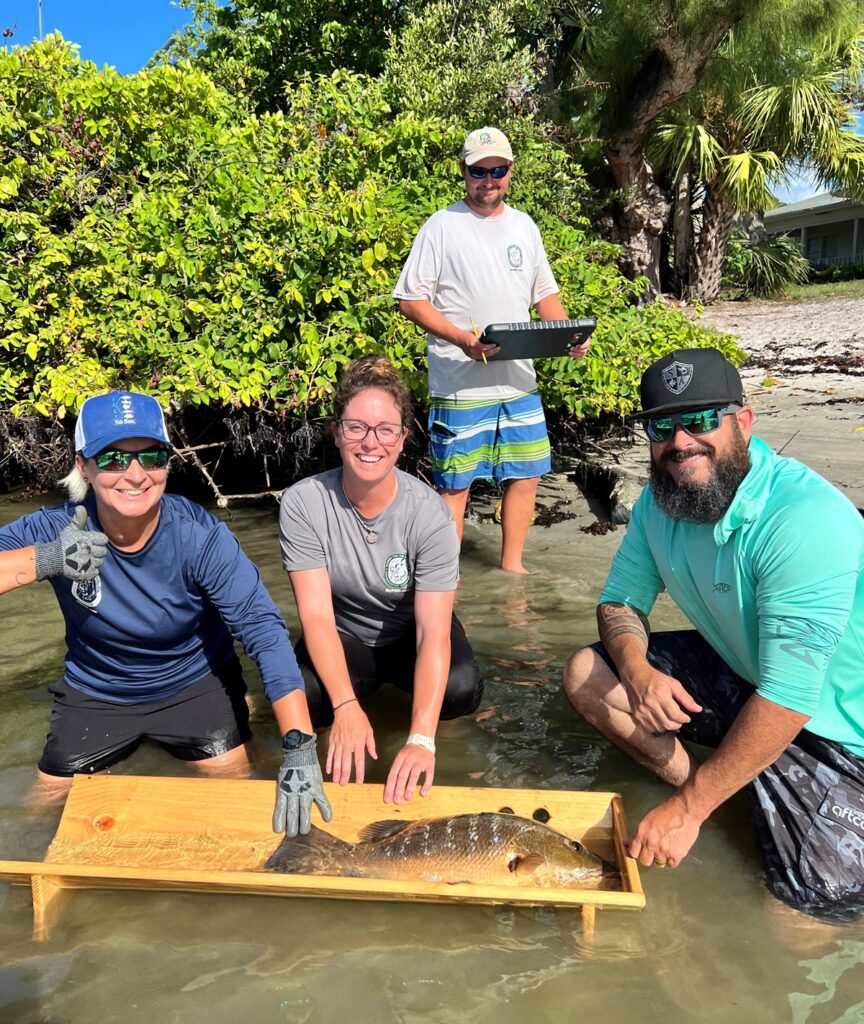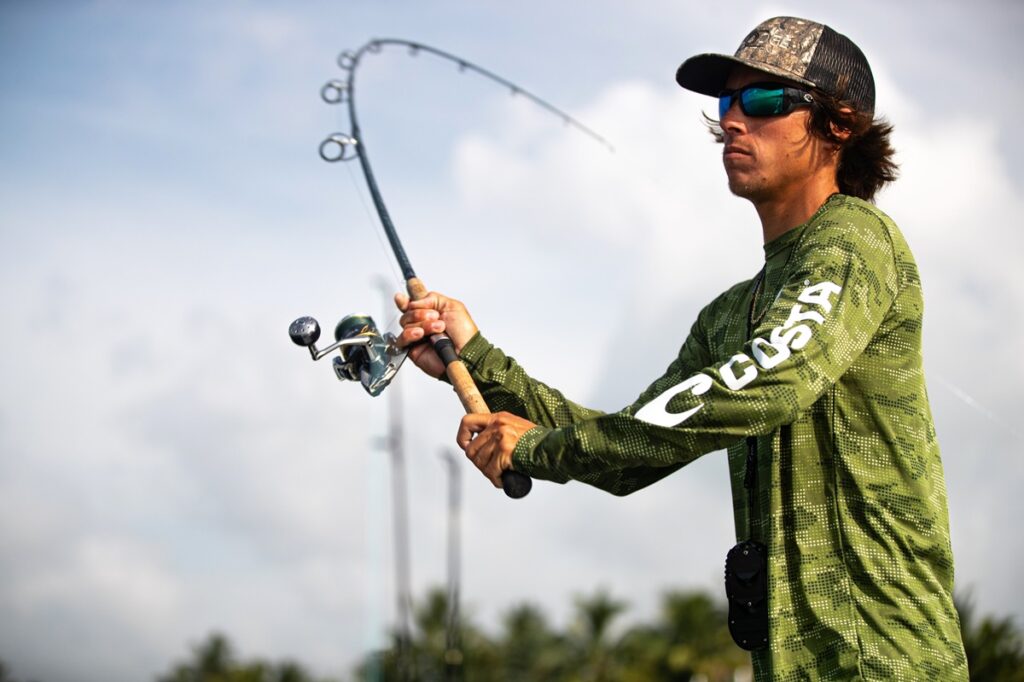Whitetail deer in Everglades swamp sled
Everglades Deer Sled-1200-Credit Richard Martinez
Do you have any thoughts on this post?
Whitetail deer in Everglades swamp sled
2024 legislative session could be an opportunity to permanently conserve the parcel via conveyance to Grand Teton National Park
Today, the Wyoming State Loans and Investments Board voted unanimously to table the proposed public auction of the Kelly Parcel until fall of 2024.
“The Wyoming people have spoken clearly at multiple meetings across the state—the Kelly Parcel should never be developed,” said Josh Metten, Wyoming field representative for the Theodore Roosevelt Conservation Partnership.
Surrounded on three sides by Grand Teton National Park, the Kelly Parcel (T43N R115W Sec. 36) sits on crucial elk winter range and is centrally located in the northern portion of the “Path of the Pronghorn.” The property is also located in a Wild and Scenic designated portion of the Gros Ventre watershed which is home to native Snake River cutthroat trout.
This iconic parcel is a gateway to the National Park and the Bridger Teton National Forest, an area loved by Wyomingites and visitors alike.
State lands are managed in Wyoming to optimize revenue for public education, and this fall, Wyoming OSLI proposed to dispose of the Kelly Parcel via public auction. Privatization of the parcel could have led to development and permanent loss of invaluable habitat.
The TRCP was joined by a coalition of seven other Wyoming hunting and angling groups that sent the SLIB board a comment letter in support of conserving the parcel by conveying the acres to Grand Teton National Park.
“Today’s decision opens up an opportunity for a legislative solution,” said Metten. “We look forward to working with the Wyoming legislature to ensure an outcome that will be a windfall for public education while conserving the migration corridors, critical winter range, and scenic vistas that make this parcel so special.”
Learn more about Wyoming migration work here.
Photo Credit: Josh Metten
One of the country’s longest pronghorn migrations has a long road ahead
Archeologists recently uncovered what might be the oldest evidence of humans in North America near Oregon’s Hart Mountain. The artifacts, dating back to 14,000 B.C., help position the thousands of petroglyphs carved into the black basalt and rim-rock country from 6,500 years ago. These petroglyphs show how the Northern Paiute fished, hunted, and lived along the shore of Warner Lakes, at the base of Hart Mountain, and moved higher to hunt pronghorn and other big game during the summer.
Before European settlement, pronghorn roamed across western North America in the tens of millions, including on the high plains of what is now Nevada and Oregon. Unfortunately, unregulated hunting, disease, and habitat loss brought on by settlers caused a near collapse of the population. The area around Hart Mountain was one of the final strongholds for this unique species.
Determined to save the antelope, conservationists worked with President Franklin D. Roosevelt, who in 1936, signed an executive order to establish two refuges (Hart Mountain National Antelope Refuge and the Sheldon National Wildlife Refuge) for the purpose of conserving pronghorn and other wildlife. Today, more than 800,000 acres on the Hart-Sheldon Refuge Complex are uniquely managed for wildlife conservation, providing essential habitat for bighorn sheep, pronghorn, mule deer, and others. The refuges have also provided high-quality, big-game hunting opportunities for decades.
Since both refuges were established, researchers have learned a great deal about the wildlife and surrounding sagebrush steppe. Results from recent migration research have reinforced the importance of these two refuges as well as the adjoining 20 miles of BLM lands that separate them. From 2011-2013, biologists with the U.S. Fish and Wildlife Service followed 32 female pronghorn in the Greater Hart-Sheldon. What they found was one of the longest pronghorn migrations in the country, spanning more than 100 miles across 3 million acres of public lands.
In general, pronghorn spend summers in the higher elevations at Hart Mountain, then move to lower-elevation winter range on the Sheldon. But the pronghorn herds also utilized the adjacent Bureau of Land Management lands as much or more than the U.S. Fish and Wildlife Service refuge lands throughout the year. Wildlife don’t recognize land ownership boundaries, and it’s critical that the habitat in this corridor remains unfragmented and ecologically intact for the long haul.
Unfortunately, over the past two decades, populations of mule deer, bighorn sheep, and sage grouse have declined, both on the refuges, and across the region. As wildlife biologists work to identify the cause of these concerning counts in hopes of reversing the trend, it’s clear that more financial resources, habitat restoration work, and management strategies are needed, both on BLM and USFWS managed lands.
That’s why the Theodore Roosevelt Conservation Partnership has asked the Department of the Interior to direct the USFWS and the BLM to work together with the local community to identify a cooperative management strategy and update their overarching management plans to best conserve and restore the habitat and big game populations, both on the refuges and the BLM lands between, so pronghorn can move freely across the high-quality habitats to promote healthy populations for future generations of hunters to enjoy.
Learn more about TRCP’s work in the Pacific Northwest here.
A version of this blog was originally published by the Bend Bulletin.
Photo credit: Kabsik Park
After 13 years of service, Whit Fosburgh has stepped down as president and CEO. We hope you will join us in thanking Whit for his commitment and contributions that have transformed TRCP into the crucial conservation organization that stands today.
The Board of Directors is pleased to announce the appointment of longtime conservation leader Becky Humphries to serve as interim CEO. Additionally, longtime TRCP Board Member, Alston Watt, has been elected as the new TRCP Board Chair following the tenure of James A. Baker IV. Watt is the Executive Director of the Williams Family Foundation of Georgia and has an extensive background in leadership and international conservation projects.
TRCP continues to rise to the challenge originally set forth by our founder, Jim Range—to unite and amplify our partners’ voices to advance America’s legacy of conservation, habitat, and access. Since our inception only 20 years ago, TRCP has become the largest coalition of conservation organizations in the country, all united around Theodore Roosevelt’s conservation legacy.
Today, our partnership model is the driving force for conservation in America, representing 63 nonprofit partners and 29 corporate partners. Together, we have advanced momentous safeguards for Alaska’s Bristol Bay; established a $350 million Wildlife Crossing Pilot Program; secured $161 million BLM investment to restore landscapes across the West; and advanced America’s largest habitat restoration investment to date in Louisiana, the Mid-Barataria Sediment Diversion project.
As we look ahead, we know we are only getting started. In the coming year, we remain committed to our staff and partners who work every day to create common-sense, lasting solutions — like protecting Alaska’s Brooks Range from a major industrial access corridor; directing federal agencies to digitize water and fishing access through the recently introduced MAPWaters Act; and, ensuring that the crucial Farm Bill conservation programs enjoyed by hunters and anglers are protected and adequately funded.
Read about Becky Humphries achievements and leadership in the conservation community.
Meet the Team: TRCP Staff and Board Members unite and amplify our partners voices to advance America’s legacy of conservation, habitat, and access.
You can’t talk about gigantic snook in South Florida and not talk about Capt. Ryan Nitz. Case in point, that picture of him above got you to read this blog. And how about these shots?


The inshore charter captain has made himself known for finding the biggest snook you can catch, which in Florida means 48 inches. Snook are one of the state’s most popular inshore sportfish, largely due to a reputation for putting up a serious fight. These fish are found around Florida, but Nitz says most are nowhere near the size as those found on the southeast coast of the state, perhaps due to an ample diet of baitfish and shrimp.
Enamored with both catching and filming snook, Nitz spent many years figuring out where and when to go, and what bait and lures to rig up, to regularly get himself on the stripe-sided fish. He started posting snook pictures taken from a GoPro on his head to social media, just for fun, and became an overnight sensation.
“The fish sold themselves really,” he says. They also landed him a business.
Nitz says the snook fishery has suffered heavily compared to just 20 years ago.
“Of course, we would love to go snook fishing year-round and keep our fish year-round,” he says, “but that’s not the world we live in.”
Snook need protection from more than just overfishing. The fish are greatly affected by the quality, timing, and volume of water flowing from Lake Okeechobee and other areas of the Everglades out to South Florida’s estuaries. Conservation groups continually come together to try and tackle myriad problems caused by infrastructure built decades ago, designed to drain swamplands and reroute water to benefit agriculture and developing coastal communities. Nitz knows it’s not an easy task. Everglades restoration efforts must take a broad approach that considers everything from marine fisheries health to water quality to protecting interior Everglades upland island habitats and communities.

“They’re one of the meanest fish. They pull way harder than snook, pound for pound.”
Nitz is now voluntarily branching out to focus his charter business on species besides snook – both for sporting success and for conservation benefit – even though snook remain his “bread and butter.” Nitz says he’s recently dialed in on cubera snapper, the largest species of snapper, which can grow up to 125 lbs.
“They’re one of the meanest fish,” he says. “They pull way harder than snook, pound for pound.”
He stumbled into cuberas while snook fishing. He’d often cross paths with tarpon and jack crevalles when angling with live mullet or ladyfish. But something else kept taking his tackle; doing everything it could to get him into submerged rocks. Determined to land whatever was getting the best of him, he bought bigger rods and reels and figured out the best times to target the fish. It turns out what was snatching all his rigs were 30-inch cubera snapper. They’re now becoming one of his clients’ favorites.
In addition to cuberas, he’ll also be targeting more tarpon and permit this year, largely to take the pressure off the snook fishery due to a dwindling local population and overfishing. He says it’s not the first time he’s voluntarily avoided putting clients on overexploited fish, though it’s garnered him criticism and pushback from some captains and potential clients. He adds that besides knowing he’s helping out the resource, the younger crowd often offers him messages of support for taking care of the fishery and environment.

South Florida and Everglades conservation efforts are not just about specific species in specific areas, like the snook where Nitz fishes, or cuberas, which he has helped Florida Fish and Wildlife Conservation Commission biologists tag for research projects. Though these fish species indeed rely on the necessary water quality and volume, and protection from overfishing, broader Everglades restoration is a vastly complex issue.
Many different government agencies, nonprofits, Tribal nations, and recreation groups are trying to find ways to restore ecosystems and recreation opportunities as much as possible under current constraints. Years of dedicated effort are now beginning to pay off through actions by partnerships formed within groups like the Everglades Coalition.

“All the ideas are already in place, and just need executed,” Nitz says. He explains that’s why it’s important to keep federal, state, and private dollars flowing in to address the enormous scale of Everglades conservation. “We know what needs to be done. We just need to do it.”
Nitz says he would like to see more funding go to infrastructure plans addressing where managers can store or safely move the region’s water over the next two decades, as they face a greatly reduced wetland footprint capable of holding and filtering that water, along with continued residential development pressure. A piece of that puzzle is already in place with construction now begun on the Everglades Agricultural Area Reservoir, which will help capture stormwater so it isn’t damaging habitat and can help prevent excessive freshwater discharges on the coast that damage marine fisheries. The project is part of a larger plan to allow more water to be directed southward to ultimately reach Everglades National Park and Florida Bay.
“We need to get everyone on the same page and address the biggest problems first.”
Nitz knows how vital it is that the broad range of conservation, preservation, hunting, fishing, and recreation groups find common ground on major Everglades restoration efforts to make sure collective energy is spent on achieving feasible solutions that all can agree on, rather than on fighting over differences.
“Sometimes people are busy pointing fingers, and when that happens nothing gets done,” he says. “We need to get everyone on the same page and address the biggest problems first.”

Before his success and online notoriety as an expert snook fisherman, Nitz fished around Florida – from freshwater for largemouth bass in the Kissimmee area down to the saltwater in Biscayne Bay for bonefish and tarpon. He also hunted throughout the Everglades and beyond. Back then, all the hunting and fishing he did was for only fun.
Now, it’s just mostly for fun.
Fishing and hunting remain Nitz’s passions and are central to everything in his life. Besides being a charter captain, he’s also a well-known barefoot hunter who targets Everglades deer, Osceola turkeys, and wild hogs. He even points out that every recent vacation he and his girlfriend have taken is to hunt in another state, just to mix it up.
“When you’re hunting or fishing, you know how excited you can get about it,” he says. “But if you ask someone who doesn’t hunt or fish, they don’t know any feeling like it.”
###
Note: Part 1 of this blog series on Ryan Nitz, which focused on his hunting exploits in the Everglades, can be viewed here.
Photo credits: All images courtesy of Ryan Nitz
Theodore Roosevelt’s experiences hunting and fishing certainly fueled his passion for conservation, but it seems that a passion for coffee may have powered his mornings. In fact, Roosevelt’s son once said that his father’s coffee cup was “more in the nature of a bathtub.” TRCP has partnered with Afuera Coffee Co. to bring together his two loves: a strong morning brew and a dedication to conservation. With your purchase, you’ll not only enjoy waking up to the rich aroma of this bolder roast—you’ll be supporting the important work of preserving hunting and fishing opportunities for all.
$4 from each bag is donated to the TRCP, to help continue their efforts of safeguarding critical habitats, productive hunting grounds, and favorite fishing holes for future generations.
Learn More
